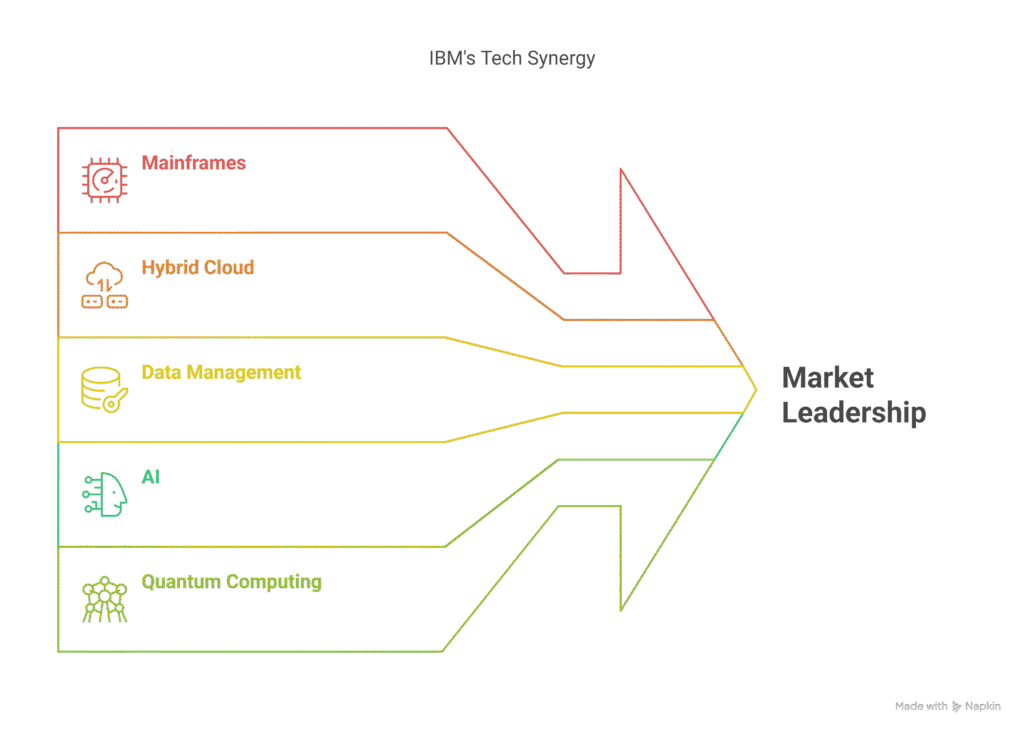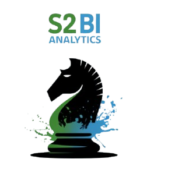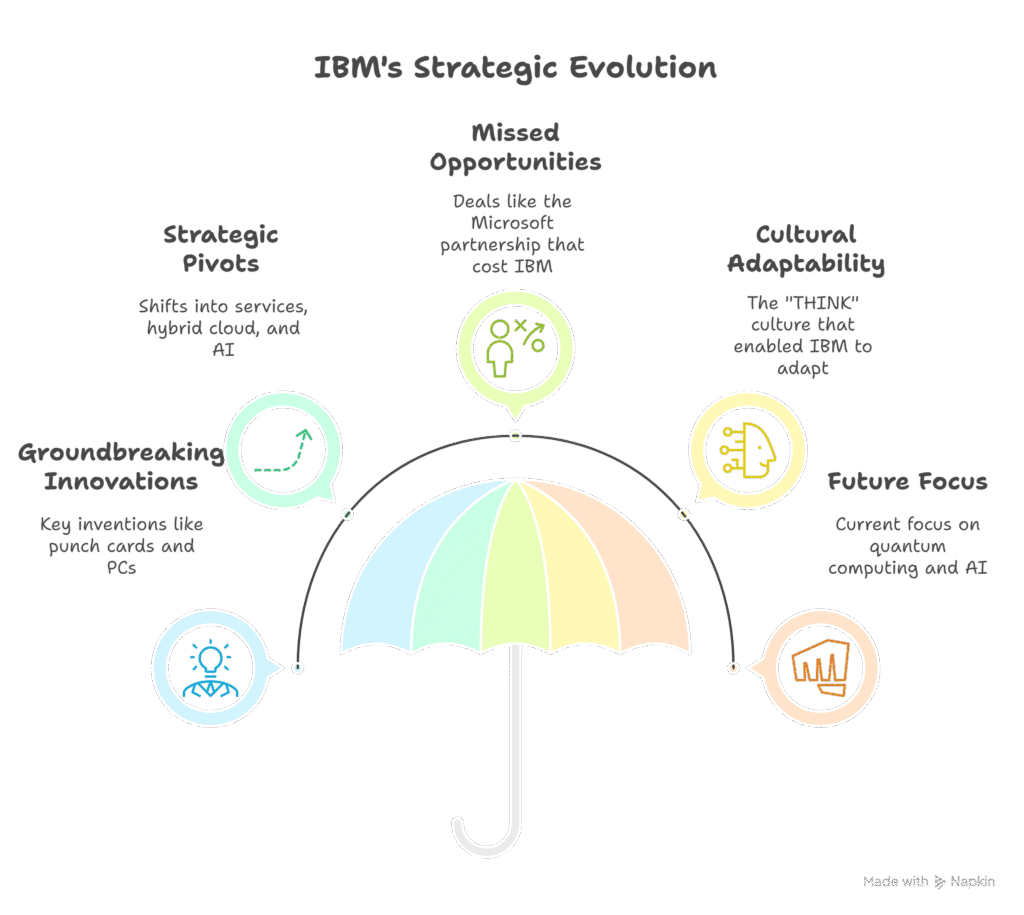IBM’s approach to IT infrastructure is guided by a core philosophy: “We sell what we use, and we use what we sell.” This principle is evident throughout IBM’s global operations, where the company’s own hardware, software, data management, and cloud solutions form the backbone of its internal tech stack. In this post, we’ll break down the IT building blocks at IBM and show how they power innovation, efficiency, and security for one of the world’s most influential technology companies.
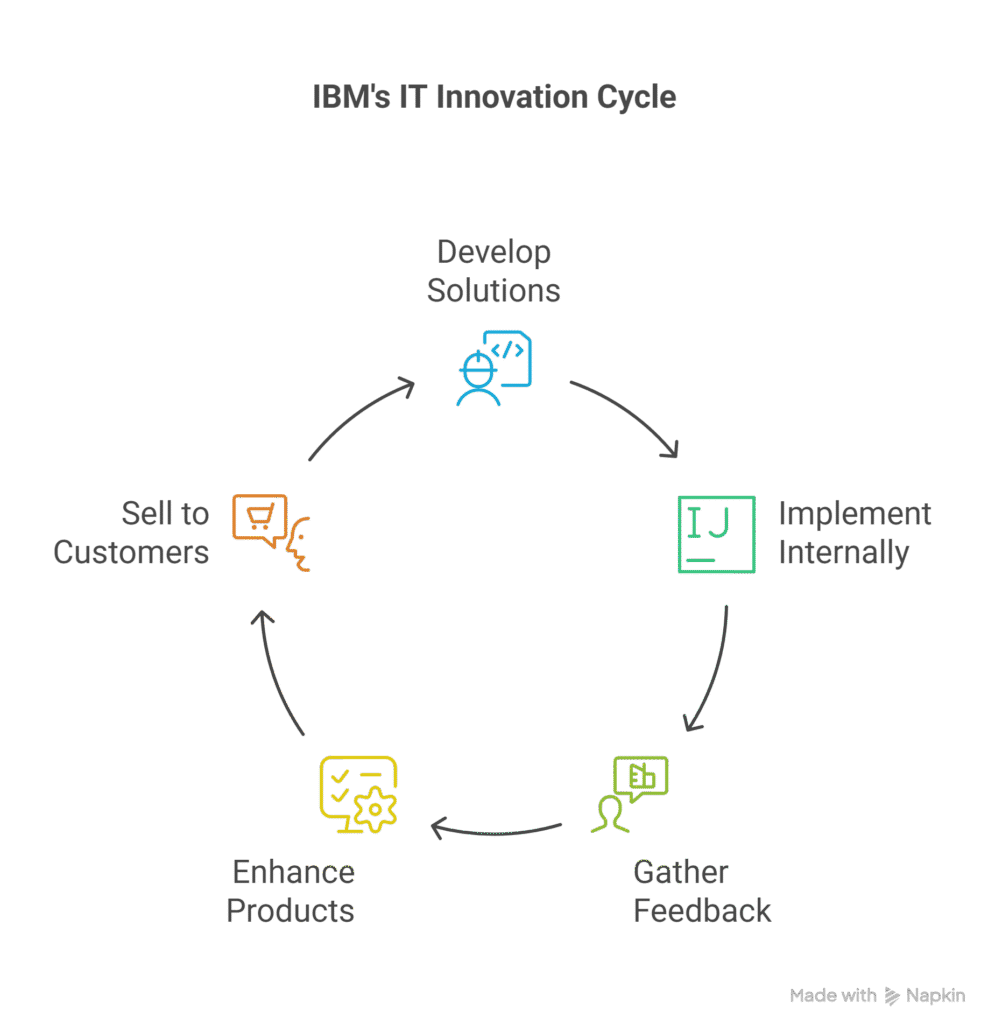
IBM’s Hardware Foundation: Mainframes, Power Servers, and Hybrid Cloud
IBM’s hardware infrastructure is a blend of robust mainframes and scalable cloud solutions. A key example is IBM’s transition from legacy SAP to S/4HANA, enabled by its acquisition of Red Hat Enterprise Linux. This move allowed IBM to run SAP applications on Red Hat Enterprise Linux on Power servers within its own cloud-a capability now available to other companies through the Breakthrough initiative. This not only modernized IBM’s internal ERP for over 150,000 users in 175 countries but also reduced infrastructure costs by 30% through automation and server consolidation (IBM adopts ‘Rise with SAP’ for internal ERP cloud move).
IBM’s Generation Z mainframes are also central to its AI strategy. Many core enterprise data assets in industries like finance, manufacturing, healthcare, and retail rely on mainframes. IBM enables organizations to leverage these “crown jewels” as first-class citizens in the AI journey, ensuring that mainframes remain at the heart of digital transformation (AI on the mainframe? IBM may be onto something).
For a deeper dive into IBM’s infrastructure solutions, explore IBM IT infrastructure solutions.
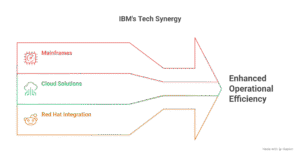
Software Ecosystem: Modern Tools and Automation
IBM’s software ecosystem is built on a mix of industry-standard applications and proprietary solutions. The company uses platforms like Windows 11, Office 365, Salesforce, SAP, GitHub, and Jira for specialized tasks. The adoption of SAP S/4HANA through the RISE with SAP program modernized IBM’s internal ERP, driving efficiency and cost savings (IBM adopts ‘Rise with SAP’ for internal ERP cloud move).
IBM’s Watson AI platform powers virtual agents, analytics, and industry-specific solutions, supporting automation and better decision-making (What can modern Watson do?). Developer tools like Red Hat OpenShift enable DevOps in the hybrid cloud, while automation tools streamline workflows and predictive analytics.
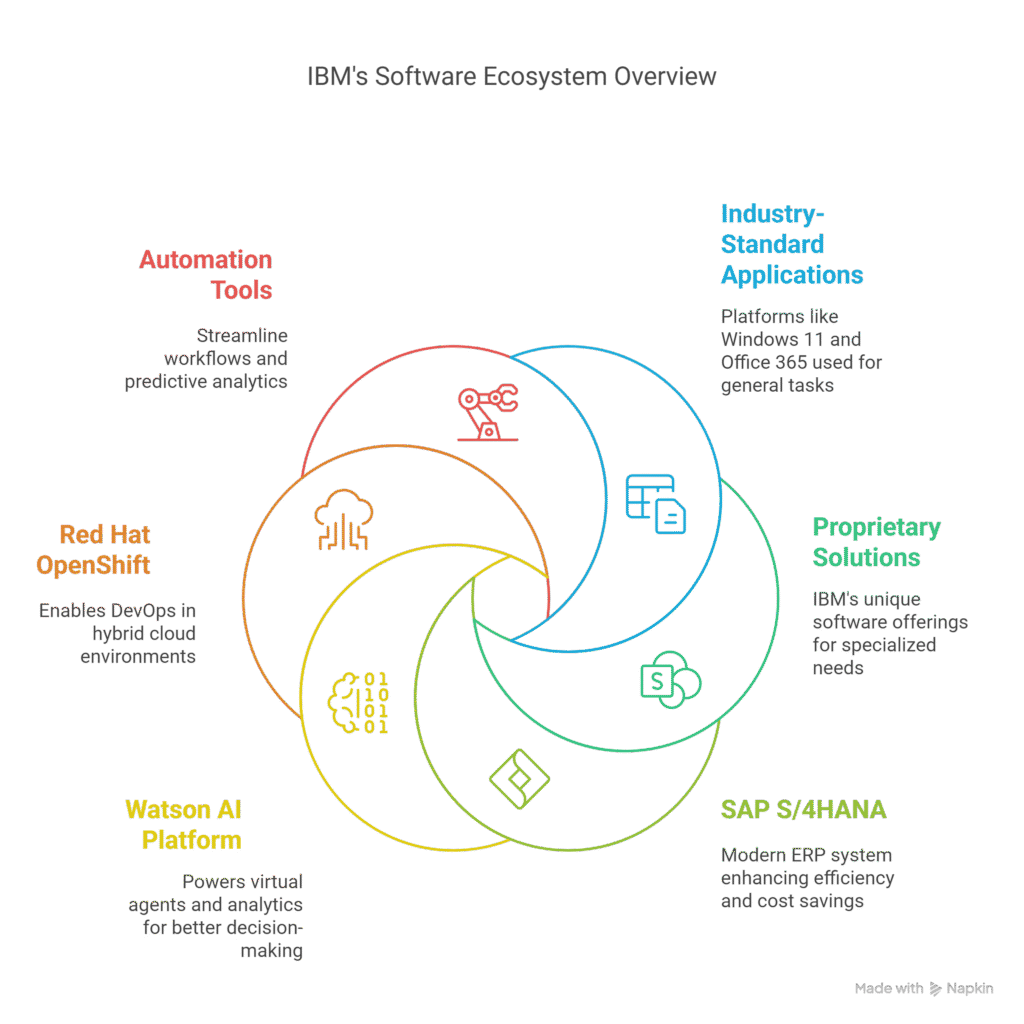
Data Management Framework: Quality, Security, and Real-Time Insights
IBM has been a pioneer in data management since the creation of SQL in the 1970s. Today, IBM uses Watson Knowledge Catalog to enforce data quality, scanning for issues at every level to ensure reliable business intelligence. Security is paramount, with IBM’s Z mainframes protecting critical financial and operational data. Running analytics and AI directly on mainframes allows IBM to maintain strict data governance and minimize risks associated with data transfer (AI on the mainframe? IBM may be onto something).
Network and Cloud Architecture: Secure, Scalable, and Flexible
IBM’s network architecture leverages cloud and virtual machines running on Red Hat Enterprise servers, providing scalability and reliability with robust failover capabilities. IBM was the first to run VMware workloads in the cloud and now offers VMware Cloud Foundation as a fully managed or self-managed service.
Secure communication between on-premises hardware and the cloud is enabled by IBM Cloud Satellite, which allows organizations to use IBM Cloud services like WatsonX and Cloud Pak for Data while maintaining security and auditability. IBM’s BYOD (Bring Your Own Device) program, supported by strong security protocols, boosts productivity and employee satisfaction while reducing hardware costs (IBM CIO bets big on digital workplace to lure tech talent).
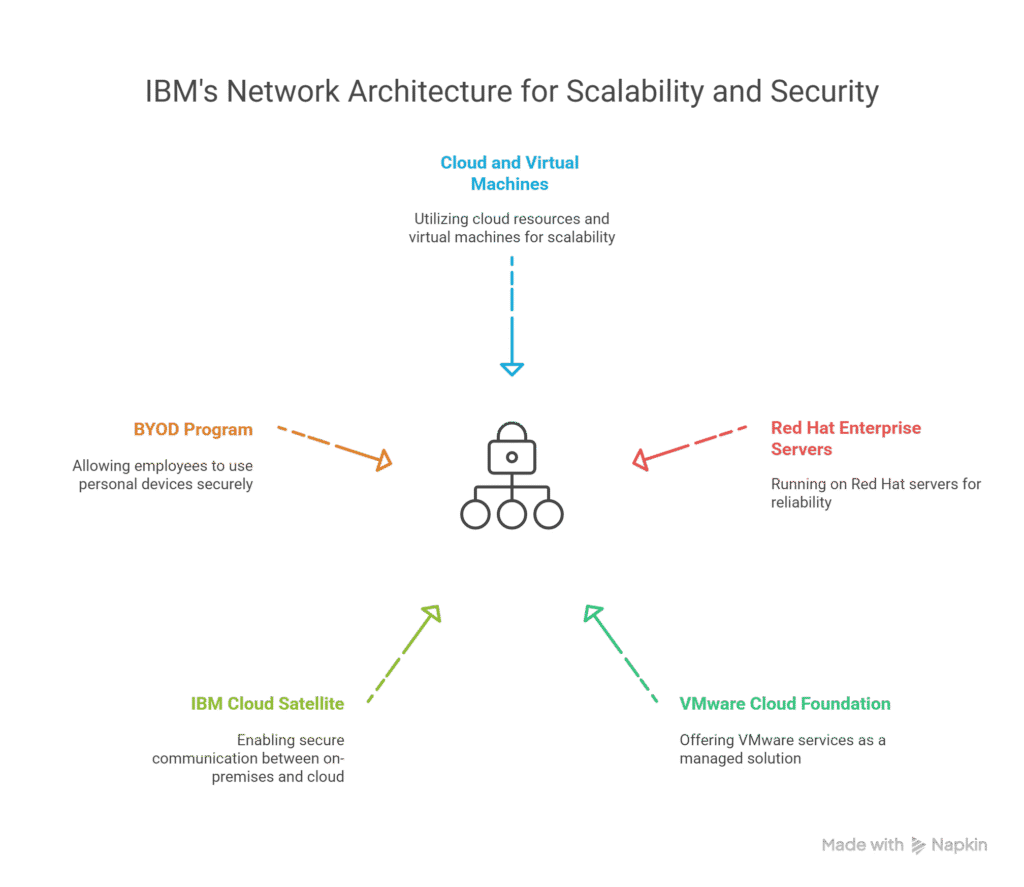
Operational Challenges and Evolution
With a history spanning over a century, IBM faces the ongoing challenge of integrating legacy systems with modern cloud-native development. Balancing mainframe infrastructure with cloud innovation is a key focus. IBM’s workplace-as-a-service (WPAAS) initiative, which has transitioned 400,000 employees to a customizable platform, exemplifies this evolution (IBM CIO bets big on digital workplace to lure tech talent).
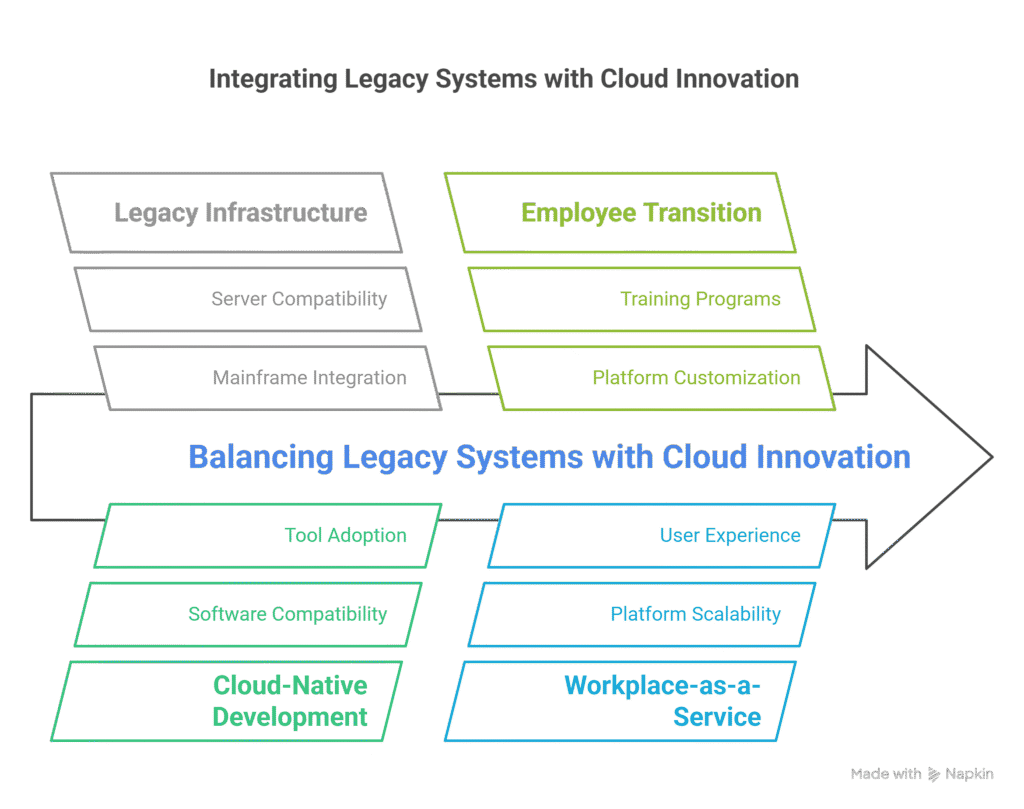
Conclusion: IBM’s “Use What We Sell” Philosophy in Action
IBM’s IT building blocks showcase the company’s commitment to using its own products to drive innovation, efficiency, and security. From mainframes and hybrid cloud to advanced data management and AI, IBM’s internal tech stack is a living demonstration of its market-leading solutions, supporting its leadership in areas like AI and quantum computing.
